World Cup 2022 stadiums
Qatar has proposed 8 stadiums for the 2022 World Cup. The total estimated budget for the football stadiums is € 3 billion. Qatar will develop and use eco-friendly technologies to cool the World Cup stadiums in 2022. These technologies can then also be used by other countries.
After the Football World Cup, the built stadiums will be reduced in size, after which they will be used as permanent stadiums for regional clubs. Parts of the stadium can also be used as separate modules by other countries in Asia.
Table of contents [hide]
? min. reading time | ? wordsThe World Football Cup will be played in 2022 in the following 8 stadiums:
- Al Bayt Stadium (Al Khor City): capacity 60.000 seats
- Ahmad Bin Ali Stadium (Umm Al Afaeo): capacity 40.000 seats
- Al Thumama Stadium (Al Thumama): capacity 40.000 seats
- Al Janoub Stadium (Al Wakrah): capacity 40.000 seats
- Khalifa International Stadium (Aspire): capacity 40.000 seats
- Lusail Iconic Stadium (Lusail City): capacity 80.000 seats
- Education City Stadium (Al Rayyan): capacity: 40.000 seats
- Stadium 974 (Ras Bu Abboud): capacity: 40.000 seats
Qatar has proposed 7 host cities for the 2022 World Cup.
Al Bayt Stadium (Al Khor City)
Capacity: 60,000 seats
Designer: Dar Al-Handasah
Distance from Doha: 43 km
The 60,000-seat stadium is the future home of football club Al Khor Sports Club. In this stadium, matches up to and including the semi-finals are played. The design of the stadium is derived from the Bedouin tents, which are often used as a symbol of hospitality in Qatar.
The football fans who visit the Al Bayt Stadium in the city of Al Khor in 2022 will walk through a landscape similar to Aspire Park. They will arrive at a stadium that is inspired by traditional Arab tents and will be 37 meters high. Three rings with seats will provide space for 60,000 spectators of the World Cup in Qatar. The seats are black, red and white in the design of the tent. A sliding roof offers optimum cooling so that you can play football all year round.
The stadium has a sliding roof that can be closed in just 20 minutes. This allows the playing conditions to be optimally regulated. A complex has been built within walking distance of the stadium where workers can live.
The football stadium in Al Khor has a specific concept from Qatar and refers back to the history and culture, such as the nomad tents. The building gets a modern design with an upper ring with removable seats. After the World Cup in 2022, this ring will be removed again and the number of seats will be reduced to 32,000.
The Al Bayt Stadium has a cooling technology based on multiple cooling systems. These systems are cooled using the cold water from the nearby energy center.
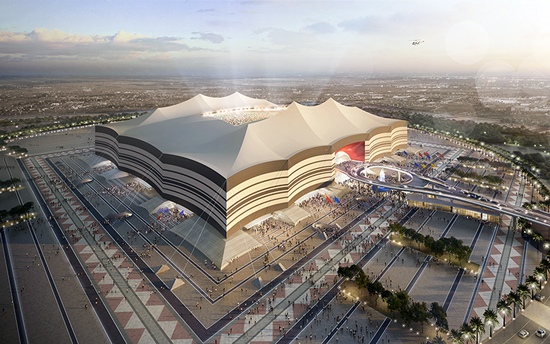
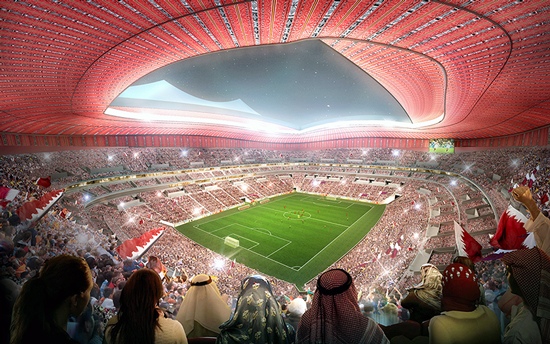
Ahmad Bin Ali Stadium (Umm Al Afaeo)
Capacity: 44.740 seats
Designer: Ramboll
Distance from Doha: 22 km
Qatar is making progress towards the 2022 World Cup with the progress of the stadiums. The new design of Ahmad Bin Ali Stadium, the fifth proposed stadium for the football tournament, was shown in April 2015. Ronald and Frank de Boer played in Al Rayyan.
The Ahmad Bin Ali Stadium is being built next to the existing Al Rayyan Sports Clubs stadium. This is the former Ahmed Bin Ali stadium, which was recently demolished. During the World Football Cup there will be room for 40,000 football fans in the stadium. The stadium has enough capacity to host both group matches and matches in the knock-out phase. After the tournament, the number of seats will be reduced to 21,000. The upper ring seats are removed and sent to emerging countries for use in their sports facilities.
The Ahmad Bin Ali Stadium will be the home of the most successful club in Qatar, namely Al Rayyan. The design of the stadium fits well into the landscape of the playing city and the community. The buildings around the stadium contain various (sports) facilities that can be used by the local population, including a mosque, athletics track, cricket field, tennis court, hockey field, soccer training fields, skate park and a bicycle track.
According to Ronald de Boer, the new design looks very impressive and he would like to play again at the club in the new stadium. The area will be one of the most beautiful areas in Qatar, partly due to the planned renovations around the stadium.
210,000 cubic meters of land have been excavated for the new Ahmad Bin Ali Stadium. For the foundation, parking and the new soccer field, they dug 6 meters deep. The environment will be completely changed in 2019 when the construction is ready, partly due to the new Dukhan highway, the Doha Metro and a new shopping area.
The proposed stadium for matches up to and including the quarterfinals of the 2022 World Cup will be the home base of Al Rayyan Club after the tournament. This football club is the current champion of the Stars League. The stadium is a short walk from the Doha Metro station and close to the new Mall of Qatar. This makes the stadium ideal for serving as a local community place with sports facilities.
The first cement was recently dumped and the workers are continuing to build the 40,000-seat football stadium. The Ahmad Bin Ali Stadium is also inspired by tradition and culture. More than 100,000 m3 of cement and 6,700 tons of steel will be used to realize the stadium. The Ahmad Bin Ali Stadium in Qatar has been voted the Stadium Design of the year 2016.
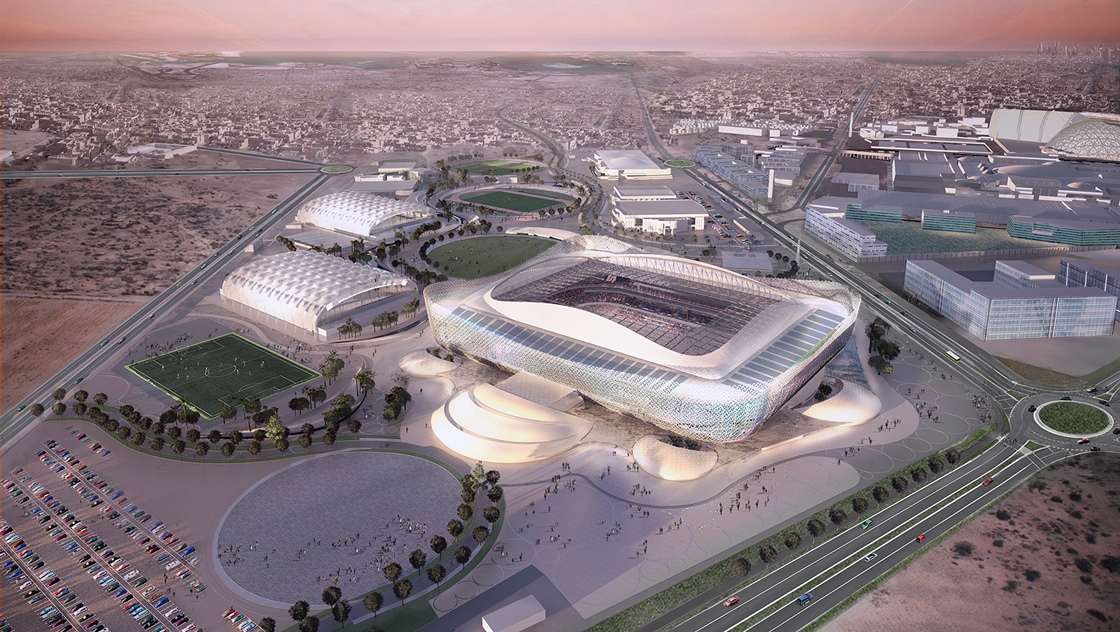
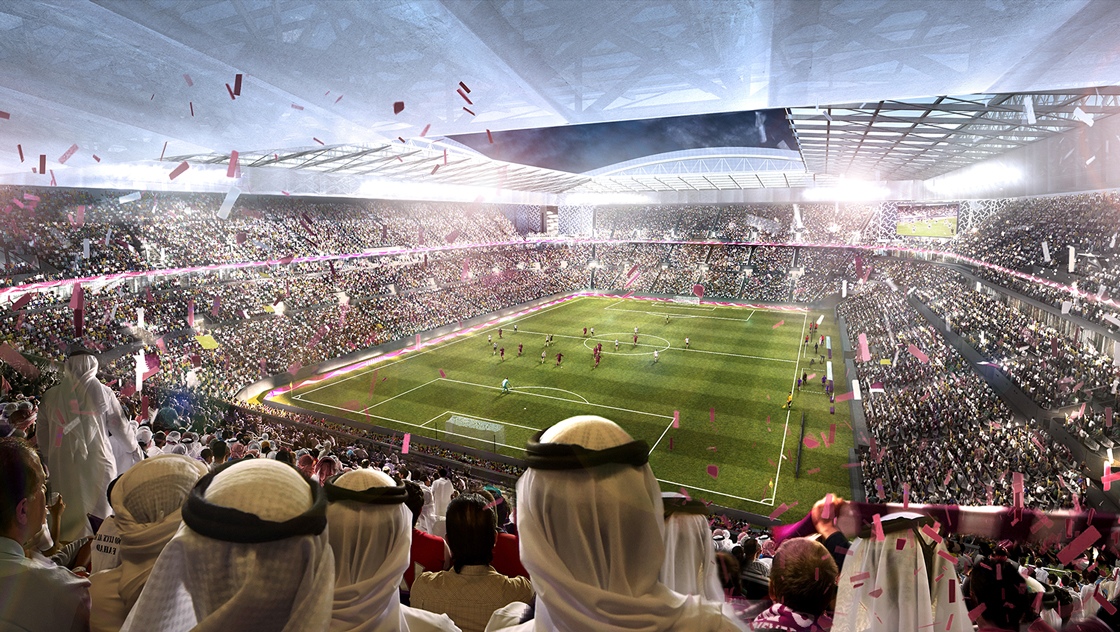
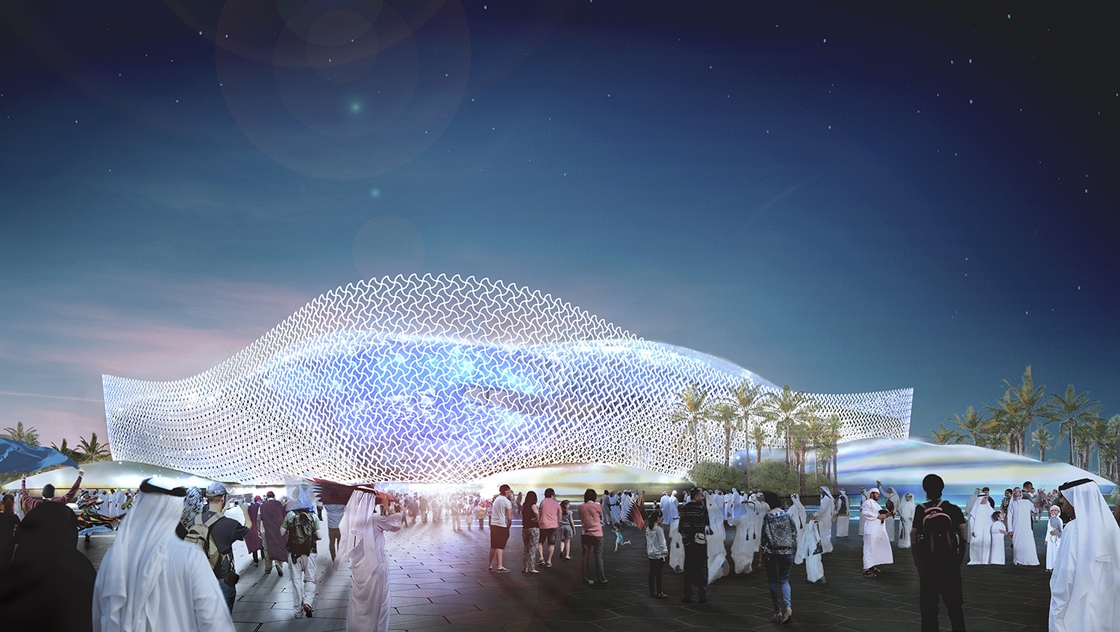
Al Thumama (Al Thumama)
Capacity: 40.000 seats
Designer: Arab Engineering Bureau
Distance from Doha: 13 km
Qatar has announced the design of the Al Thumama Stadium. This stadium is the sixth proposed football stadium for matches up to and including the quarter finals of the World Cup in 2022.
The football arena was designed by Ibrahim M. Jaidah, architect of the Arab Engineering Bureau from the host country. This company is the oldest architectural office in Qatar and has an extensive portfolio, including the embassy of Oman.
The design is derived from the woven gahfiya headscarf, which has a different shape, color and name in every Arab country. "In Qatar's culture, gahfiya is an important part of every young man on his way to adulthood," said Jaidah. "This entry ritual inspired me when designing the football temple. It is an arena that symbolizes the growth that Qatar is currently experiencing to become a globally respected player in football."
The name Al Thumama Stadium was originally derived from a local tree. The thumama tree grows in that area, 6 km from the center of Doha.
Construction work on the football stadium started in 2017 and is expected to be completed in 2020. The main contractor is a joint venture between Al Jaber Engineering from Qatar and Tekfen Construction from Turkey.
"We have always tried to combine the past with the future in our designs. The gahfiya is an example of that theme. It is a mix of our heritage and culture, and dedication to the future," said H.E. Hassan Al Thawadi from the organization. According to him, the Al Thumama Stadium shines a new light on the football talent in Qatar. Other talent is also given room to organize the 2022 World Cup in Qatar. "Ibrahim M. Jaidah is a very famous architect in Qatar and we believe that he has the talent, passion and dedication for this project."
The Al Thumama Stadium will be built on the fields currently used by the national football association of Qatar. The Al Thumama district is located in the southern suburbs of Doha, 12km from the Hamad International Airport.
During the football Cup in 2022 no fewer than 40,000 visitors can enter the stadium. After the tournament, the number of seats will be reduced to 20,000. The seats are donated to any country that can use it for their sports infrastructure. The space is filled by a hotel with 60 rooms, overlooking the field.
The Al Thumama Stadium has the latest cooling technology and accessibility facilities of the highest order. The cooling technology for all stadiums in the football country has even been demonstrated to FIFA at this location, by means of a mini stadium.
Supporters can enter the stadium via the bus that runs from the metro. Prior to the 2022 World Cup, the building will serve for various facilities, including a hotel and a sports center. The environment of the stadium will be used by the community for a wide variety of sports such as handball, tennis and swimming.
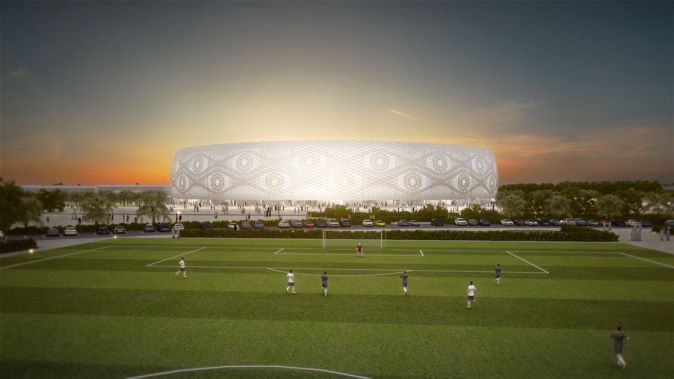
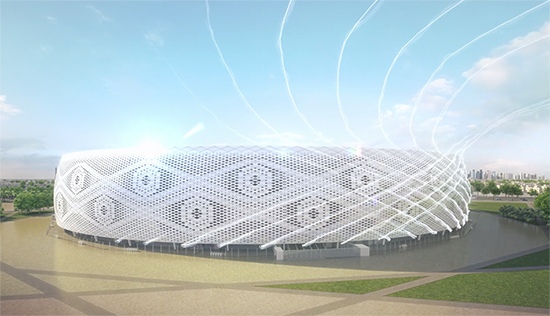
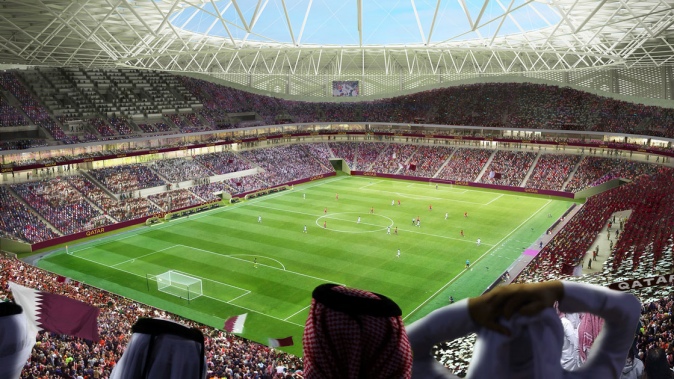
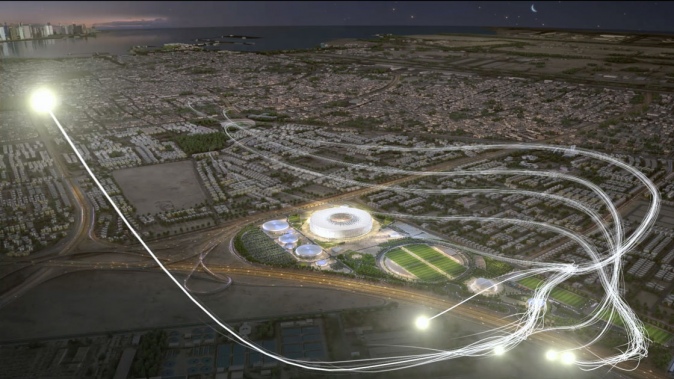
Al Janoub Stadium (Al Janoub)
Capacity: 45.120 seats
Designer: Dame Zaha Hadid
Distance from Doha: 13 km
Qatar announced the first design of the Al Janoub Stadium in November 2013. AECOM, in collaboration with Zaha Hadid Architects, developed the design that reflected the tradition of the city. The play city is known for fishing and seafaring. The stadium is currently under construction in Al Janoub and will eventually have 40,000 seats.
The football stadium is being built 15 kilometers south of the city of Doha. The concrete pillars are already in the ground and the main works can soon start according to the main contractor. The main contractor started in January 2016 with the installation of large cranes for the steel roof construction.
The Al Janoub Stadium, before it will be used during the 2022 World Cup, will be the new home stadium of Al Janoub Sports Club. The expectation is that the Qatar club will be able to enter the 48 meter high stadium at the end of 2018.
Al Janoub Stadium and the Doha Metro are directly connected to the capital and will be ready well in time for the World Cup in 2022. During the World Cup, matches are played in the stadium up to and including the quarterfinals.
The stadium has a capacity of 40,000 seats. At the end of the football tournament, the top ring will be stripped of 20,000 seats, so that the local club can still receive 20,000 spectators. The removed seats are given a different purpose, so that all parts of the Al Janoub Stadium remain useful for the community.
The Al Janoub Stadium has 40,000 seats and will organize competitions up to and including the quarter finals of the 2022 World Cup in Qatar. The main contractor is present to assess the progress and prepare the design. The work on the foundation is progressing nicely. The stadium design is inspired by the traditional dhow boats used in the fishing towns such as Al Janoub.
Three cranes have been installed in the football stadium and workers are preparing to work above ground. The main structure will be ready in 2016, using a total of six cranes that together weigh over 60 tonnes.
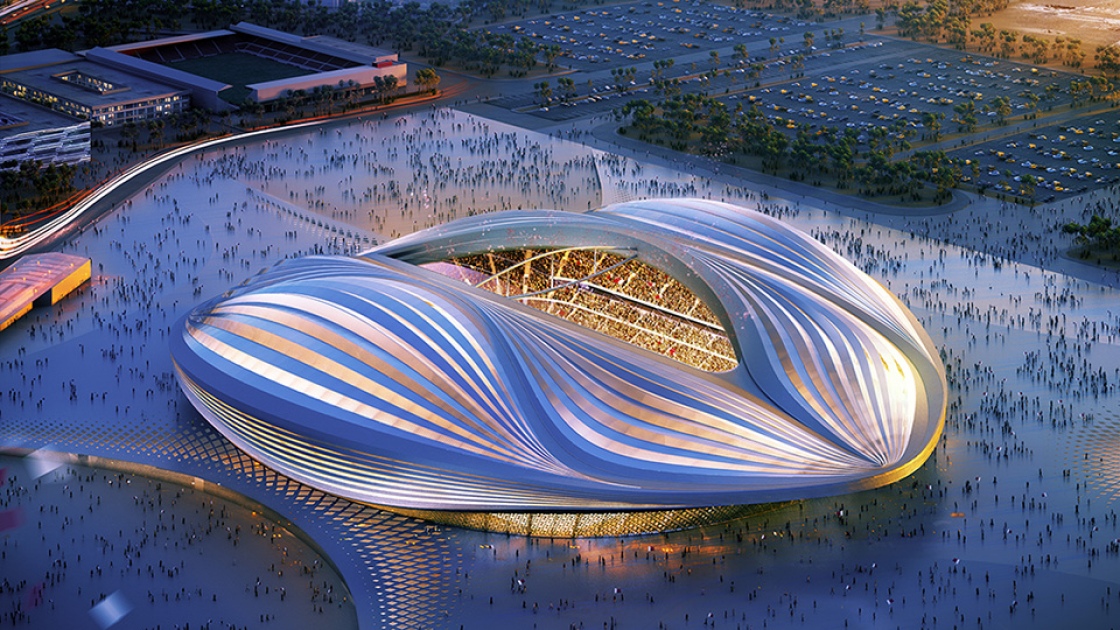
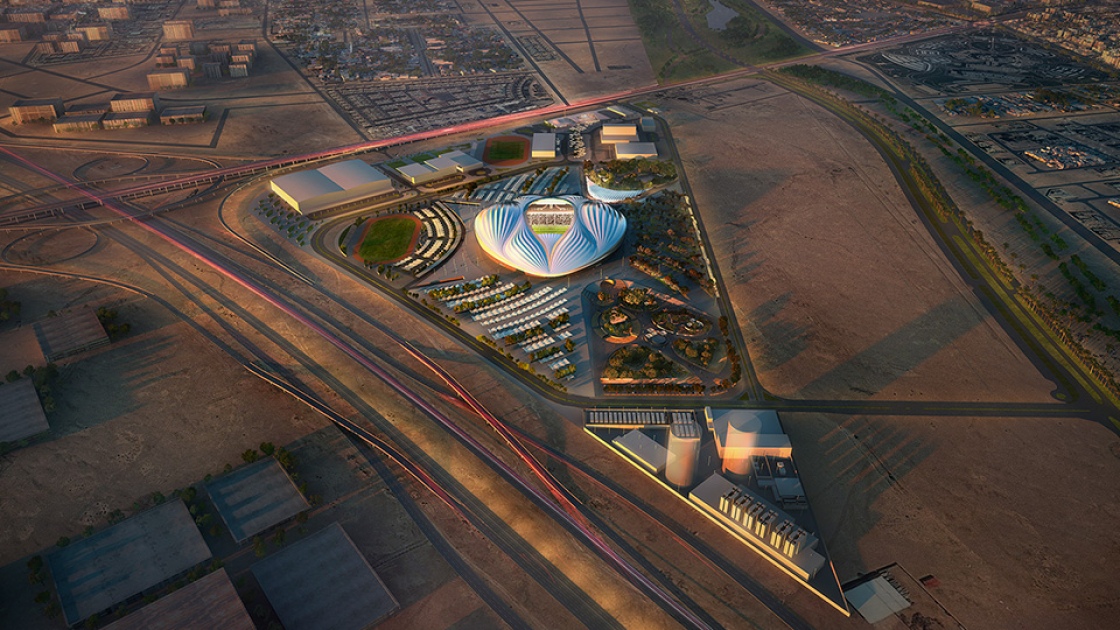
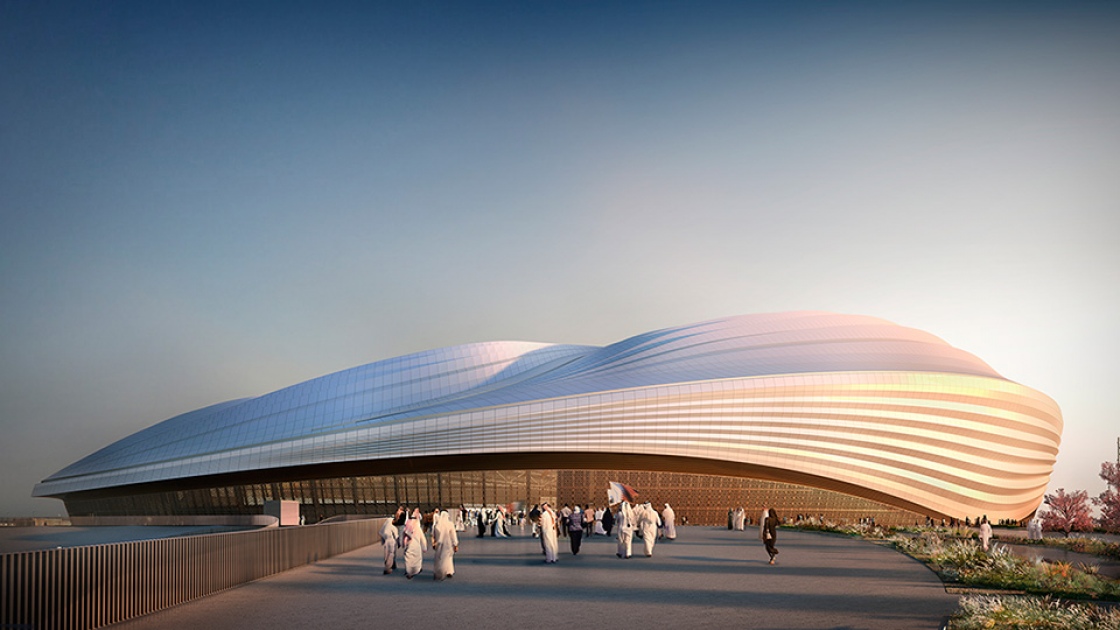
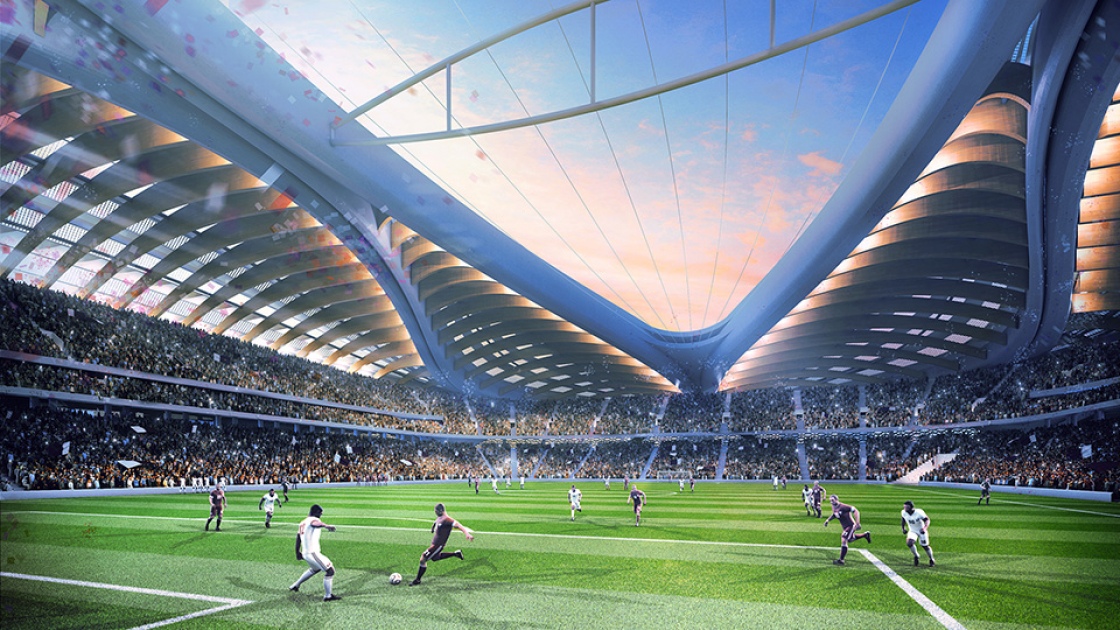
Khalifa International Stadium (Aspire)
Capacity: 68.030 seats
Distance from Doha: 13 km
The Khalifa International Stadium was added to the list of potential stadiums for the World Cup in 2022 in November 2014.
The Khalifa International Stadium is located in Al Rayyan Municipality and for a long time played the most important role in the development of Qatar as a host country for a Worldwide football tournament. The construction of the stadium is in the hands of the Aspire Zone Foundation. The arch and the undulating roof of the Khalifa International Stadium are visible from far away. Originally there was a large arch on the eastern side. This arch was used as a platform in 2006 where fireworks were set off due to the opening ceremony of the Doha Asian Games. This arch is currently being replaced by two arches that will be visible from a greater distance.
The Khalifa International Stadium was built in 1976 and had 20,000 seats. In the same year, matches of the Golf Cup were played, as in 1992. Currently, the football stadium is undergoing a major renovation, so that matches of the World Football Cup in 2022 can also be played. For the 2022 World Cup, the stadium will have 40,000 covered seats, including a cooling system. The renovation allows the stadium to host group matches, eighth final and quarterfinals.
According to the contractor, work is constantly being done to improve the health and safety of the construction site. 3,300 construction workers are busy renovating the Khalifa International Stadium, which ultimately amounts to 3,234,709 man-hours without significant incidents. The football stadium includes the 3-2-1 Qatar Olympic and Sports Museum, restaurants, shops, VIP rooms and a health center. Two new metro stations are also being built nearby.
The Khalifa International Stadium will be the first World Cup 2022 stadium that is ready. The stadium is expected to be delivered early 2017. The work is progressing and the exterior is already being applied. The large LED screens will be hung in the short term. This shows what the stadium will look like in a year.
The complex system of cables for the roof of the stadium is also ready. The headpiece of the roof will be placed in the coming weeks. When the work on the roof is finished, the countdown to the 2022 World Cup will start. In the Khalifa International Stadium, matches will be played until the quarter-finals.
The field in the stadium for the 2022 World Cup was laid in record time by 40 specialists. Specially for the Khalifa International Stadium, the grass was developed in Qatar and laid within 14 hours. This football stadium is the first to be ready to host the football World Cup. To be precise, the football pitch was laid in 13.5 hours, with around 7,800 m2 of grass moved by 40 specialists from the Turf Nursery to the historic stadium. The experts used 8 special machines to position the grass correctly. The previous record was also in the name of the same team. In 2016, the pitch was laid at the Al Sadd Sports Club's Stadium in 14 hours and 40 minutes.
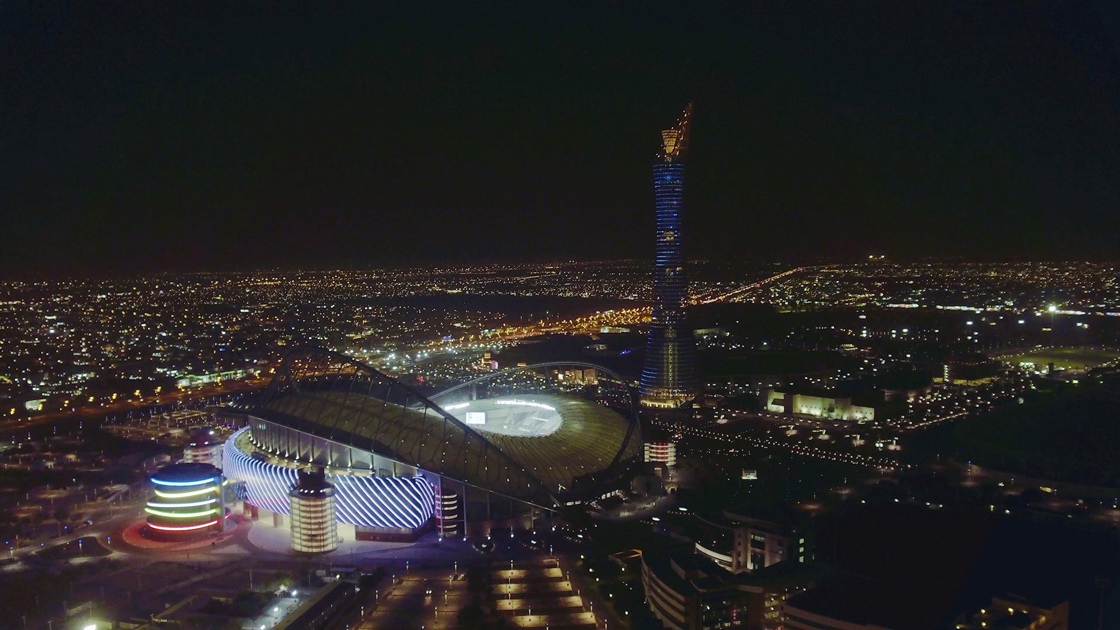
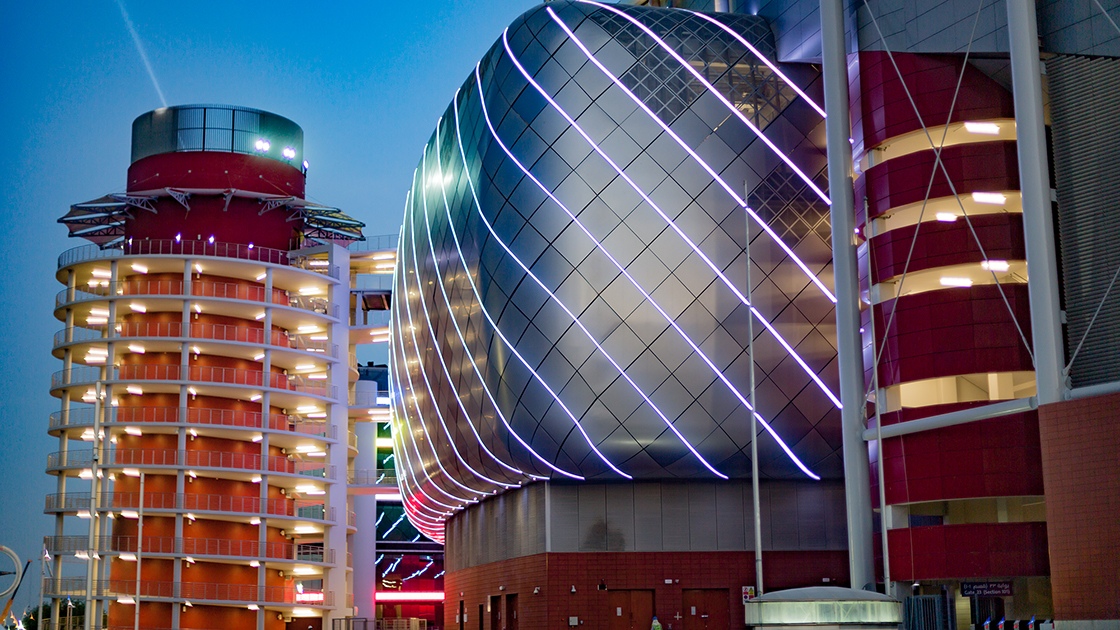
Lusail Iconic Stadium (Lusail City)
Capacity: 86.250 seats
Designer: Foster + Partners
Distance from Doha: 16 km
The football stadium has 80,000 seats and is expected to be complete by the end of 2020. The structure is approximately 12 kilometers north of the capital and Doha's West Bay. This ultramodern city is gradually taking shape and will in the future have 200,000 inhabitants who can enjoy the parks, ports, businesses, theme park and football stadium.
The Lusail Stadium was designed by the British Foster + Partners. The building was designed as a golden vessel and inspired by the Arabic architecture. The design celebrates the age-old traditions and craftsmanship of the region. Lanterns are also woven into the design, as well as detailed bowls that have been made in Qatar since long ago.
After the World Football Cup, the football stadium will be converted into a space for the neighborhood, including schools, shops, cafés, sports facilities and health centers. Residents of the new city will therefore find everything under one roof.
To make room for these plans after the tournament, the seats are removed and donated to other sports projects around the World.
The opening match and the final of the 2022 World Cup are played in this stadium.
![]()
![]()
![]()
Education City Stadium (Al Rayyan)
Capacity: 45.350 seats
Designer: FIA Fenwick Iribarren Architects
Distance from Doha: 12 km
The stadium that is located in Doha's Education City is expected to be ready by the end of 2019. Here in 2022 games will be played up to and including the quarterfinals. The excavation work included 650,000 cubic meters. The implementation of the dewatering system will be prepared in the coming months.
By the end of 2016, the main contractor has been fully mobilized in and around the Education City Stadium, from where one can easily work according to schedule. Workers are currently working on the foundation and steel structure.
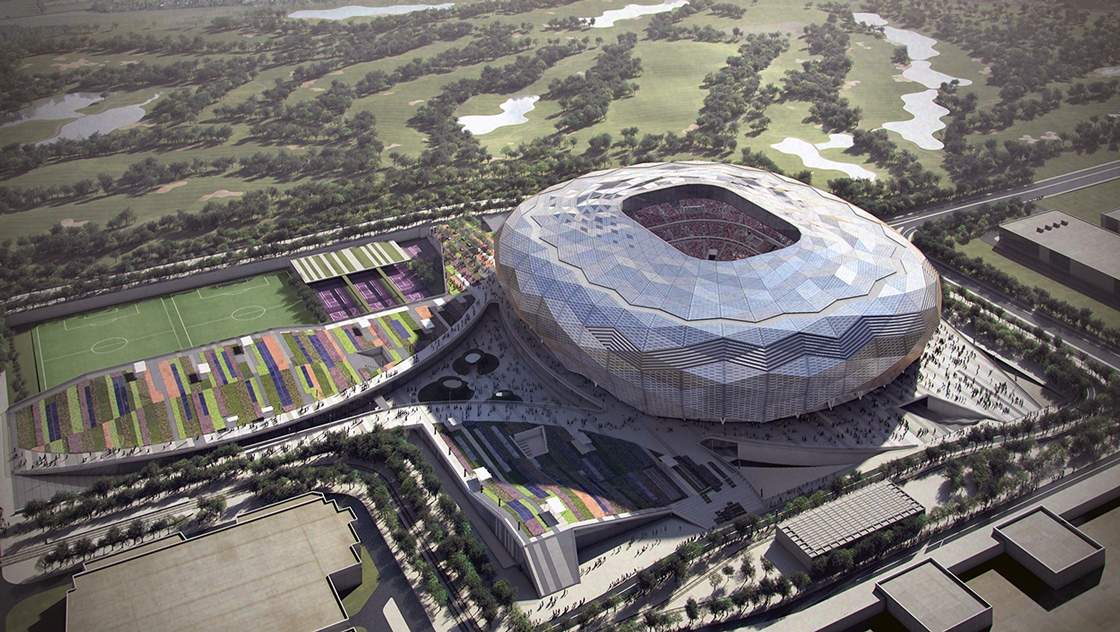
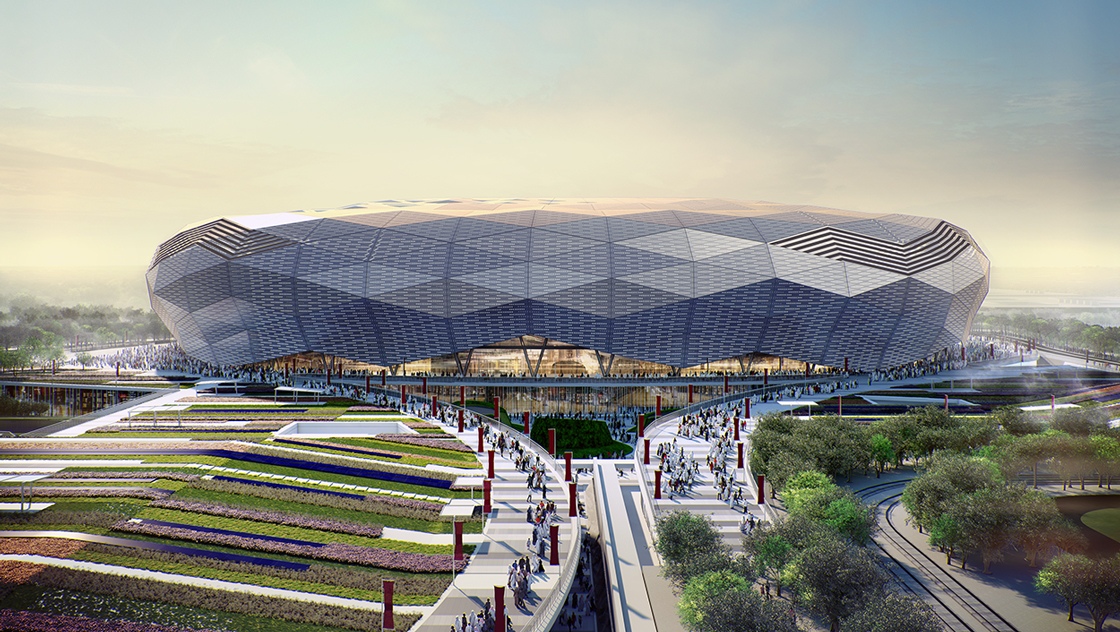
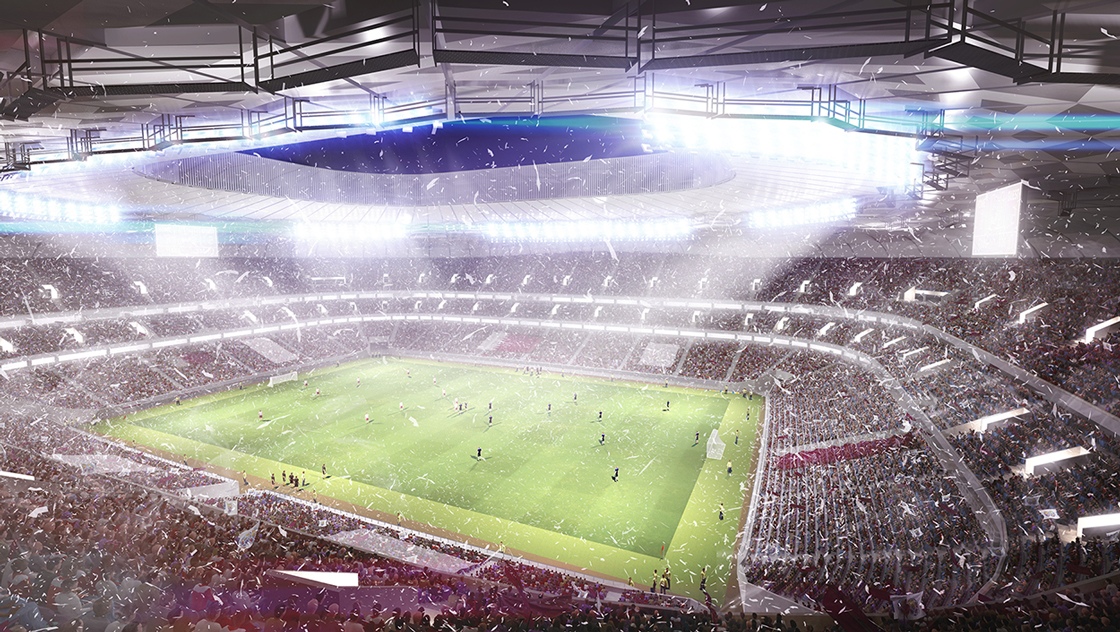
Stadium 974 (Ras Bu Abboud)
Capacity: 40.000 seats
Designer: FIA Fenwick Iribarren Architects
Distance from Doha: 10 km
To the east of the center of the capital Doha, a new football stadium will be set up in the Ras Bu Abboud area. This stadium overlooks the futuristic skyscrapers of the West Bay district.
The design of the stadium and the surrounding area is not yet ready. It is certain that at least 40,000 spectators can watch the games in the temple. The stadium has a field of natural grass, reception areas for VIPs and air conditioning. Populous, one of the World's largest architectural firms, is busy with the design phase. This company has designed several well-known sports locations.
After the World Football Cup, the stadium will be used by the locals for various purposes. The environment must be prepared for the rapidly expanding population of Qatar. The organization believes it is important that the local population can benefit from the presence of the stadium.
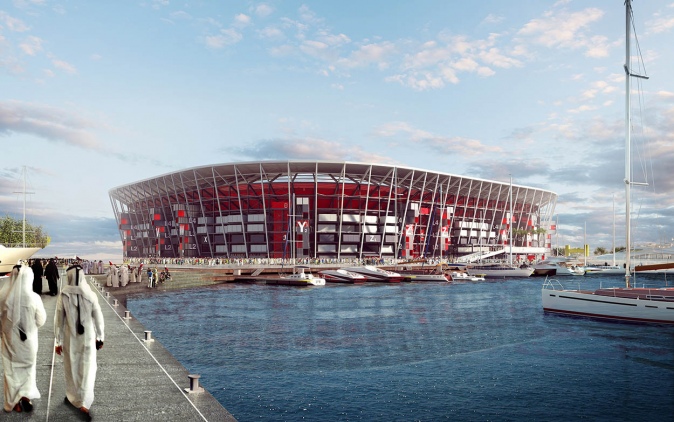
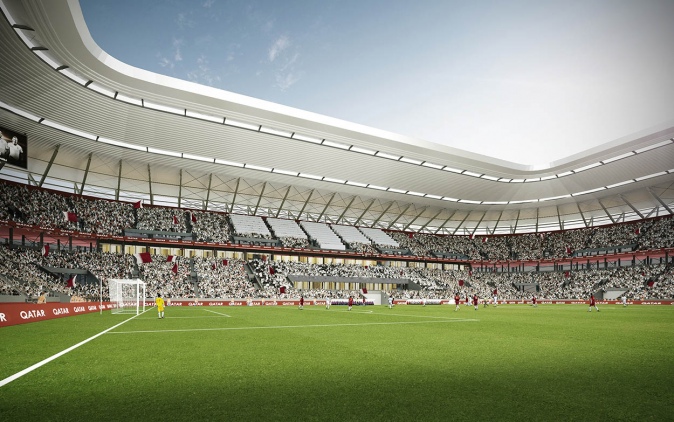
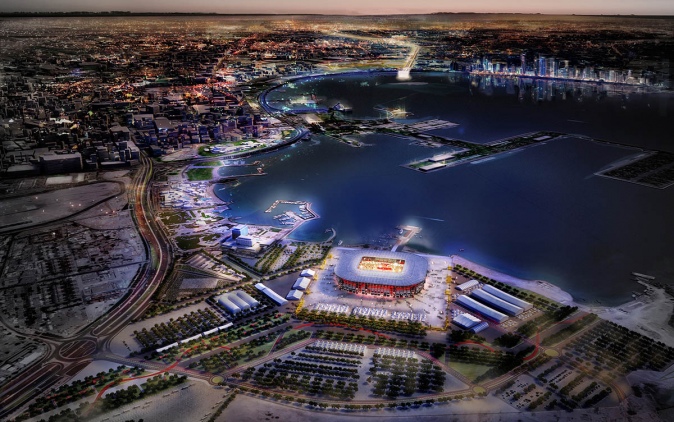
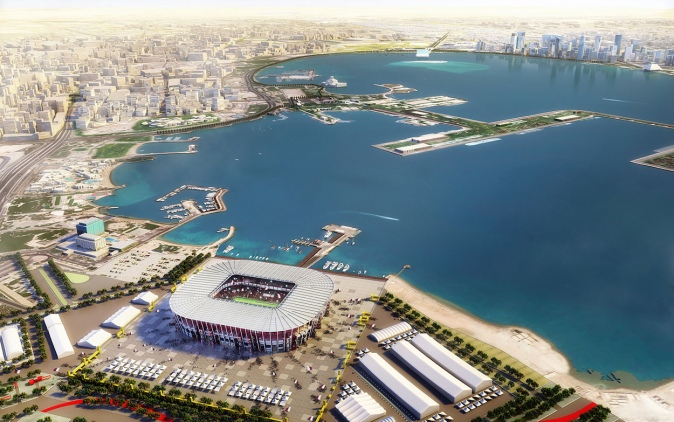
Stadiums that have not been built
The following football stadiums were part of the bid, but will not be built:
- Al-Khor Stadium (Khor): capacity 45.330 seats
- Qatar University Stadium (Doha): capacity 43.520 seats
- Sports City Stadium (Doha): capacity 47.560 seats
- Al-Shamal Stadium (Ash Shamal): capacity 45.120 seats
- Umm Salal Stadium (Umm Salal): capacity 45.120 seats
- Doha Port Stadium (Doha): capacity 44.950 seats
- Thani bin Jassim Stadium (Al Rayyan): capacity 44.740 seats
The football stadiums below were part of Qatar's bid to win the organization of the tournament. However, in 2016 it was decided not to use 12 but 8 stadiums for the World Football Cup.
Al-Khor Stadium (Khor)
Capacity 45.330 seats
The second stadium design was the Al-Khor Stadium in Al Khor City. This stadium will have an appearance that fits in Qatar, with a traditional tent-shaped design. This design honors the age-old tradition, history and culture of the host country. The modern stadium will have an upper ring from which the seats can be removed.
The 60,000-seat stadium is the future home of football club Al Khor Sports Club. In this stadium, matches up to and including the semi-finals are played. The design of the stadium is derived from the Bedouin tents, which are often used as a symbol of hospitality in Qatar. Work on the Al-Khor Stadium is on schedule, with the successful installation of elements of the main structure. They are also working on tunnels and bridges to the stadium.
The stadium has a sliding roof that can be closed in just 20 minutes. This allows the playing conditions to be optimally regulated. A complex has been built within walking distance of the stadium where workers can live.
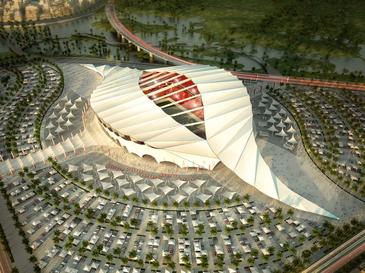
Qatar University Stadium (Doha)
Capacity 43.520 seats
Exactly four years after the announcement that Qatar was allowed to organize the 2022 World Cup, it was announced that the Qatar University Stadium will be the fourth football arena.
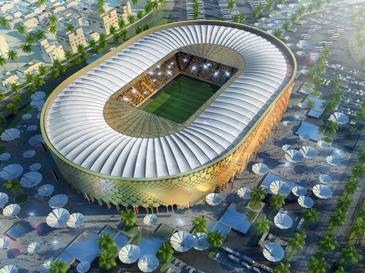
Sports City Stadium (Doha)
Capacity 47.560 seats
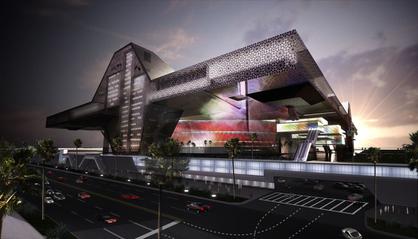
Al-Shamal Stadium (Ash Shamal)
Capacity 45.120 seats
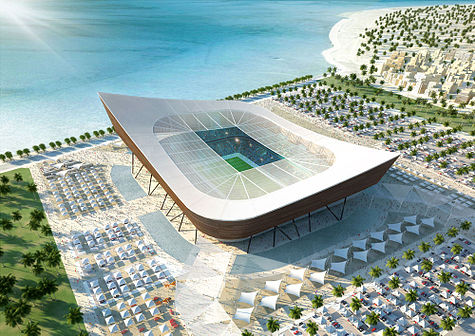
Umm Salal Stadium (Umm Salal)
Capacity 45.120 seats
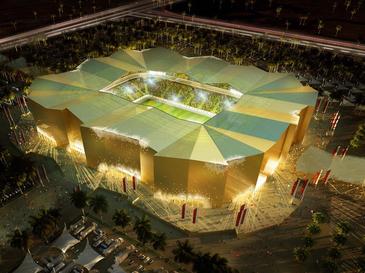
Doha Port Stadium (Doha)
Capacity 44.950 seats
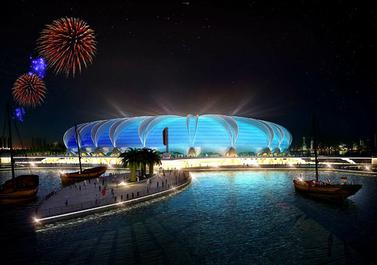
Thani bin Jassim Stadium (Al Rayyan)
Capacity 44.740 seats
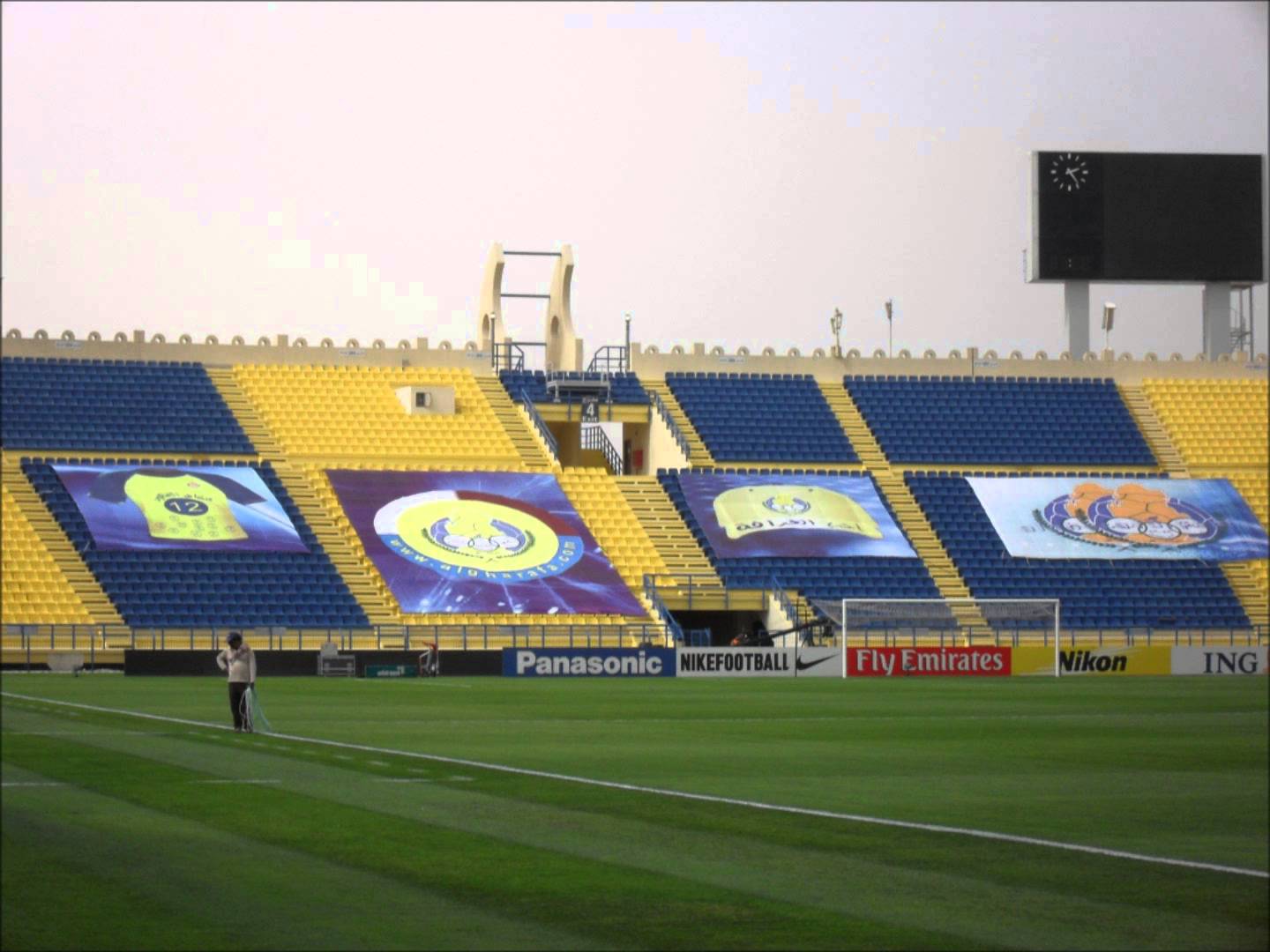
Qatar builds green stadiums for sustainability after the 2022 World Cup
The football stadiums in Qatar will be built sustainably and will not burden the environment and the environment too much. FIFA believes it has a responsibility to protect the environment and the environment. The World Cup should have as little impact as possible on the environment in Qatar. As an international organization, it takes responsibility seriously and, together with other organizations, seeks improvements.
During the event, Secretary General Hassan Al Thawadi emphasized the importance of delivering a sustainable football tournament that fits in with Qatar's national development plan. “The development of a sustainable environment is one of the pillars for building a better future for future generations, as stated in the Qatar National Vision 2030. To achieve this, we must be more sustainable than the original plans and penetrate the everyday work in all host cities. "
Al Thawadi thanks the Gulf Organization for the research and development of sustainable methods that can be used for the World Cup in 2022. These methods are a milestone on the road to a sustainable World Football Cup for future organizing countries.
The first that was developed was a measuring instrument to assess how green the buildings and infrastructure really are. All proposed host cities of the 2022 World Cup in Qatar meet or will meet the objectives of the certificate. Recently the first 300 trees of a project of 16,000 trees were planted.
Federico Addiechi, head of the social responsibility department of FIFA, was also present at the meeting. He said that the organization in Qatar is very timely in assessing the required certificates for green stadiums. It takes another seven years for the World Football Cup to take place in the country. Because action is already being taken, the research and development can take place well planned. Because of the size of FIFA's Worldwide football tournament, long-term planning is of enormous importance.
Sustainability is therefore not only pursued in sport, but also outside the football fields. The Supreme Committee for Delivery & Legacy has repeated this today. Today, FIFA held a presentation of the Global Sustainability Assessment System for the 2022 stadiums in the Green Expo Forum in Doha.
Qatar tests aerodynamics of football stadiums in wind tunnels with lasers
How do you print a football stadium in 3D? And what data can you collect from placing the scale model in a wind tunnel?
Students from Qatar University have collected answers in six months. In addition, they have collected raw data from cooling technology and aerodynamics from the 1: 300 scale model and transformed them into valuable solutions for engineers. This will save costs and the nature and surroundings around the stadiums of the 2022 World Cup will be burdened as little as possible.
It took one week to print one scale model with a 3D printer. This model is an exact copy of the design of the original football stadium for the World Cup in Qatar. Individual parts of the stadium were also printed separately. The scale models of the stadiums were placed in wind tunnels to test the aerodynamics. The design and construction of the wind tunnel also took another seven months.
In the wind tunnels, the model was analyzed by means of laser beams that captured the air flows over the football stadium. The temperature in the stadium was also measured, even with different visitor numbers. Heat / heat is a major concern for the health of the thousands of football fans who will travel to Qatar in 2022. To cool the stadiums, as little air as possible should come in from outside and the cold air in the stadium must be difficult to escape.
Two stadiums and a fan zone have been tested in this way: Al Bayt Stadium, Al Janoub Stadium and a fan zone of the 2014 World Cup in Brazil. The Al Thumama Stadium is currently being printed for testing.
Qatar University works closely with the Supreme Committe for Delivery & Legacy, as part of FIFA. The information collected is processed in the construction of the new stadiums for the World Cup in the host country. This saves time and costs during construction. The students also calculated the minimum steel required for the roof constructions, saving energy and money.
Other countries have also noticed this method of Qatar. Belgium also wants to test the new stadium in Brussels in the wind tunnels of Qatar University in Doha. In Qatar the trick is to keep cold air in the stadium, but in Belgium the rain has to stay outside. Different types of rain have been tested including the wind speed, so that football fans can always sit dry.
Natural grass or artificial grass during the 2022 World Cup
The 2022 World Cup matches will be played on natural grass. Artificial grass is allowed through special dispensation from the World Football Association.
Natural grass
Natural grass pitches may no longer be used for non-football events from two months before the start of the tournament. As a result, FIFA hopes that the quality of the natural grass will be optimal for the final tournament. It may not even be used for anything from a month before the start.
Artificial grass
If synthetic turf is used, the pitch must meet the requirements of the FIFA Quality Program for Football Turf and the International Artificial Turf Standard.
In principle, the training fields have the same type of grass as in the stadiums in the same playing city.
Field size
The football field during the World Cup in Qatar must have a size of 105 m in length and 68 in width. The height of the grass and watering are also prescribed.
Behind the goals there will be enough space for players to warm up during the matches. A maximum of six players may warm up at a time, and only the goalkeeper may warm up with a ball.
In the event of insufficient space behind the goals, a maximum of three players may simultaneously warm up along the line during the match. Goalkeepers are not allowed to use the ball.
Obviously, the goal posts must be completely white, as well as the nets in the goal. Reserve goals, nets and corner flags will be provided to ensure the progress of the game.
Training fields for the World Cup in Qatar
The training fields for the World Cup in Qatar are made available no later than five days before the first game of a team. The day after the elimination, a team may use the training field for the last time.
The teams are obliged to only use the prescribed fields for training or match preparation.
Training locations are of optimal quality and are located near the players' hotel. A team may be on the bus for a maximum of 20 minutes.
The size of a training field is 105m by 68m in size. There are lines and lighting around the field. There are showers, toilets, changing rooms and lockers.
World Cup 2022 stadiums frequently asked questions (FAQ)
How many stadiums are there during the 2022 World Cup in Qatar?
There are 8 stadiums during the 2022 World Cup in Qatar. The total estimated budget for the football stadiums is €3 billion.
What are the stadiums of the 2022 World Cup?
The stadiums of the 2022 World Cup in Qatar are:
- Al Bayt Stadium (Al Khor City)
- Al Rayyan Stadium (Al Rayyan)
- Al Thumama Stadium (Al Thumama gebied)
- Al Janoub Stadium (Al Janoub)
- Khalifa International Stadium (Doha)
- Lusail Iconic Stadium (Losail)
- Education City Stadium (Doha)
- Ras Abu Aboud Stadium (Ras Abu Aboud gebied)
Share 'World Cup 2022 stadiums - 8 stadiums for the World Cup 2022 in Qatar'
Share this message via social media with your family, friends and colleagues!
Qatar has presented 8 stadiums for the 2022 World Cup. The total estimated budget for the football stadiums is € 3 billion.
About the author of 'World Cup 2022 stadiums - 8 stadiums for the World Cup 2022 in Qatar'

Author of this content is Patrick. I have been playing soccer for more than 25 years and follow the daily news closely. My hobbies include playing football, running and maintaining various websites, in addition to my job as a financial professional.
I do not work for any related company or institution, so the information is reliable and independent. The information has been collected accurately from reliable sources and is regularly updated.
